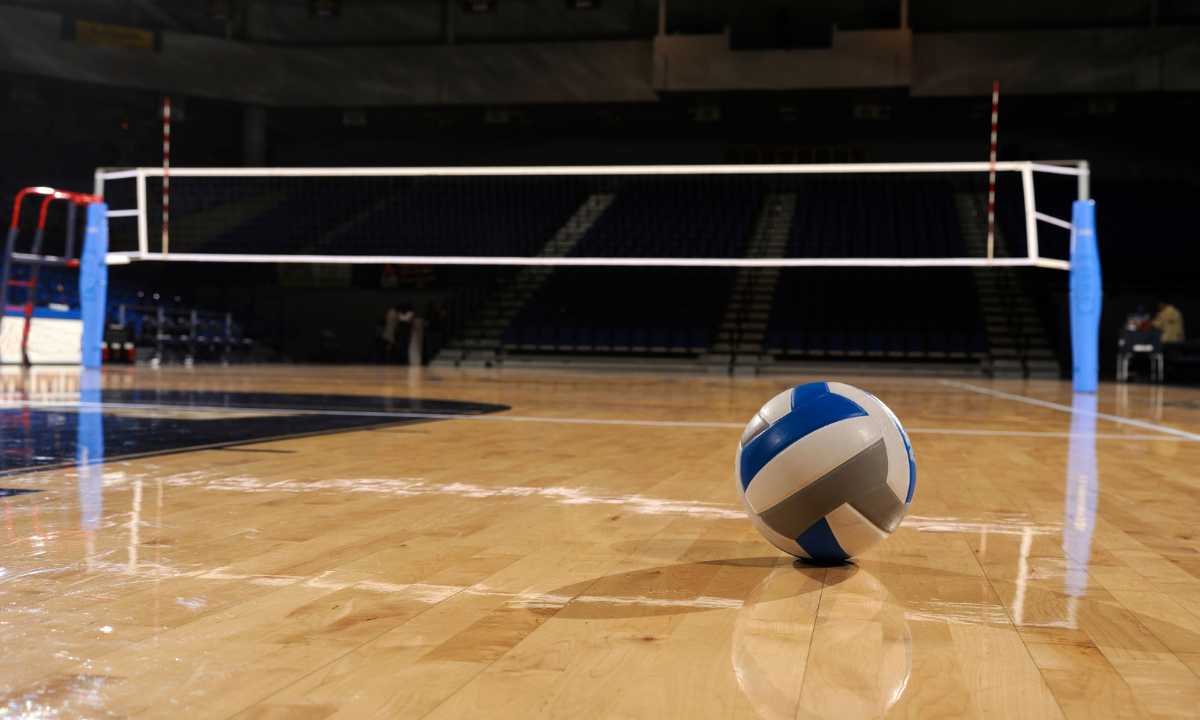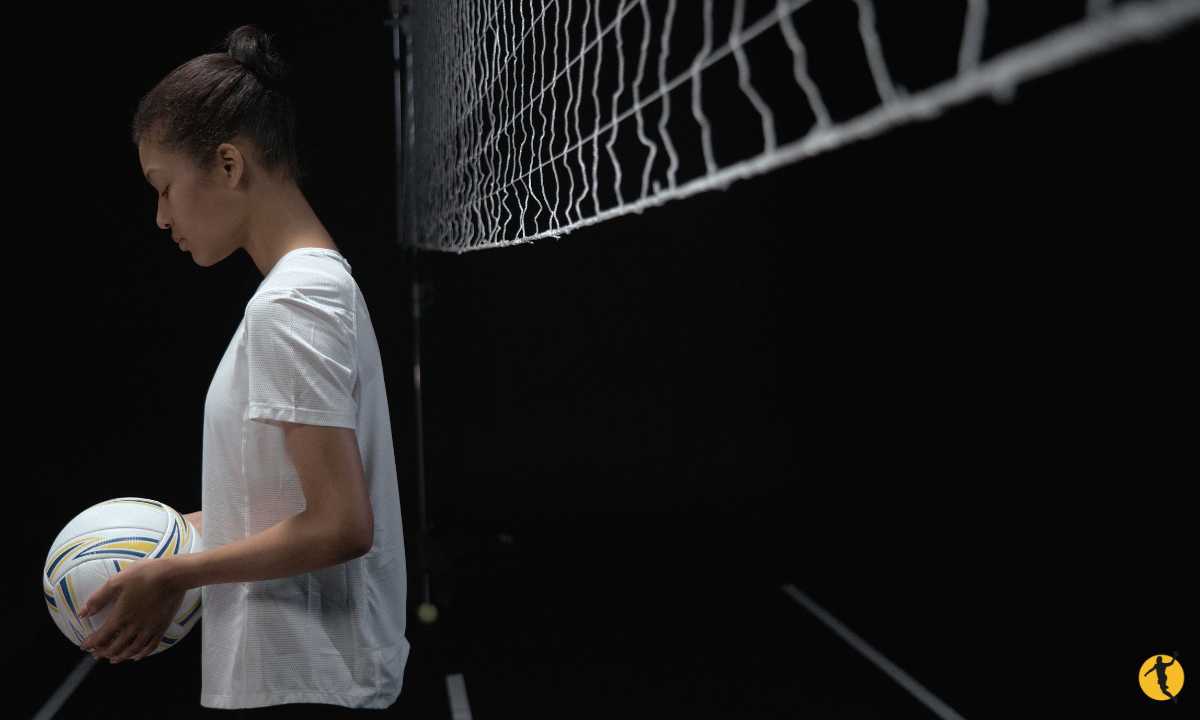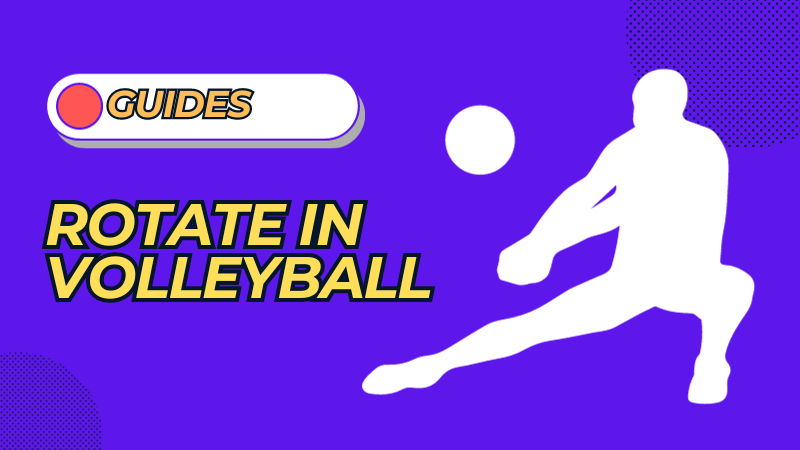Ah, the game of volleyball—a thrilling sport that keeps us on our toes, both literally and figuratively. However, one aspect that often confuses newcomers is the rotation system. When do you rotate in volleyball, and why is it so important? If you’ve ever stood on the court, slightly puzzled, not knowing whether to move clockwise or stay put, trust me, you’re not alone.
Rotation in volleyball is a crucial part of the game that determines the flow of play and the players’ positions on the court. You could get it wrong and cost your team points due to rotational violations. Plus, the rules change slightly regarding specialized players like the libero, adding another layer of complexity.
So this article is for you whether you’re a middle blocker trying to figure out when to swap positions with your outside hitter or a back-row player striving to understand the clockwise movement around the court. Let’s demystify volleyball rotations once and for all.
When Do You Rotate in Volleyball?
In volleyball, players rotate clockwise whenever a side-out occurs. A side-out is when the serving team loses a point, giving the opposing team the right to serve. At this moment, every player on the new serving team must rotate one position clockwise, with the player at the front right moving to the right back position to become the new server.
Now, let’s delve a bit deeper. Rotation happens only when your team gains the right to serve, typically by winning a rally while the opposing team serves. All six players rotate, shifting their court position in a clockwise direction. This is a cornerstone of the sport, impacting both your team’s strategy and your role—whether you’re a setter, a hitter, or a libero.
Remembering the “overlap rule,” which states that before the ball is served, players must not overlap with the teammate directly in front or behind them or to their immediate left or right. Please maintain the correct rotational position to avoid your team losing points for violations.
So, in essence, knowing when and how to rotate in volleyball is not just a procedural formality. It’s a tactical necessity that can make or break the game.
How Do You Know When to Rotate in Volleyball?

The cue to rotate in volleyball comes when your team wins a point while the other team serves. This event is called a side out, meaning your team now gains the right to serve. Once this happens, all six players on your team must rotate once in a clockwise direction. Specifically, the player in the front right corner moves to the right-back position to become the new server.
Now, for a bit of strategy. Understanding when to rotate is crucial for optimizing your team’s strengths. For instance, if you’re a setter, you’ll likely rotate into the back row, where you can continue to set but from a different position on the court.
If you’re a hitter, you’ll rotate toward the front row, getting ready to attack. And let’s remember the libero, who has a unique counter-clockwise rotation on the court to maintain optimal defensive positioning.
Always pay attention to the ‘overlap rule’ to avoid rotational violations. Before the ball is served, ensure you’re not overlapping with players adjacent to you—front, back, or sides. Any violation here, and your team loses a point.
Understanding when to rotate in volleyball isn’t just about following rules; it’s about putting each player in a position to maximize their skills for the team’s benefit. So keep an eye on the play; when that side outcomes, be ready to make your move.
Volleyball Rotation Rules
Now that we’ve got a solid grasp on when to rotate, it’s vital to dig into the rules governing volleyball rotations. After all, rotating correctly isn’t just about shifting your position; it’s about doing so within the framework of the rules to avoid penalties.
One rule that reigns supreme is the ‘overlap rule.’ According to this rule, players cannot ‘overlap’ with teammates directly in front of them, behind them, or to their left or right before the ball is served. You need to maintain this positioning until the ball is served into play. After that, you’re free to move anywhere on the court. Violating the overlap rule can cost your team points, so it’s crucial to get it right.
Understanding the intricacies of volleyball rotation rules, especially the ‘overlap rule,’ can be a game-changer. So, the next time you find yourself at the front right, ready to move to the right back position, remember: your spatial relationship with your teammates in that moment matters. Ensure you’re in the correct rotational position to set your team up for success.
Do All Volleyball Players Rotate?

The short answer is yes; almost every volleyball player on the court will rotate. It’s a universal practice across all levels of volleyball, from high school to the NCAA. Players rotate clockwise around the court, taking on different positions as the game progresses. However, there’s an exception, adding a little twist to the game. Enter the libero.
Unlike other players, the libero rotates counter-clockwise and has specific limitations regarding serving. When a libero swaps out in volleyball rotations, they usually exchange positions with a back-row player. They may not rotate to the front row, ensuring every player gets a chance to serve and be at different positions like middle back, left back, or front row.
So, when you’re on a volleyball team, you must be prepared to rotate—except if you’re the libero. Knowing when and how to rotate and the libero’s unique role in volleyball rotations is vital to keeping the game flowing smoothly and avoiding rotational penalties. It’s another layer of strategy and skill that makes volleyball such a dynamic and exciting game to play and watch.
Also, Read: How to Score and Win with Basic Volleyball Rules
Different Volleyball Rotations
Now that we’ve covered the basics of how and why players rotate in volleyball, let’s dive into some specific types of rotations that can be strategically advantageous. Depending on your team’s strengths and weaknesses, the choice of rotation can make all the difference. Here’s a breakdown of the most common ones: 4-2, 6-2, 5-1, and 5-2.
4-2 Volleyball Rotation
The 4-2 rotation in volleyball features two setters and four hitters on the court. This layout keeps the setter close to their front-right position just behind the net. While this formation can limit your offense—since the front-right player is focused on setting—it adds a layer of predictability to your plays. It’s a simple yet effective approach, especially for teams prioritizing stability over explosive offense.
6-2 Volleyball Rotation
A bit more complex, the 6-2 rotation involves two setters who only set from the back row. This allows for a maximum of six hitters on the court at any time, leading to a more potent attacking force. The back-row setter is active, while the setter in the front row becomes a hitter. This system allows you always to field your strongest players, maximizing your team’s overall effectiveness.
5-1 Volleyball Rotation
Considered one of the more advanced strategies, the 5-1 rotation utilizes just one dedicated setter who moves around the entire court. This solo setter is responsible for both front-court and back-court sets. Hence the name ‘5-1’: one setter and five other players. This strategy is generally favored by more advanced teams, often seen at the highest levels of volleyball competition.
5-2 Volleyball Rotation
Last but not least, the 5-2 rotation is an interesting mix involving two setters and five hitters. Both setters are responsible for setting up the hitters and can alternate after every other point. The strategy offers varied offensive opportunities but requires skilled setters who can also cover a lot of ground. Fewer hitters mean that the setters often have to work harder to set up successful attacks. It’s a strategy best suited for teams where both setters are highly skilled and can collaborate seamlessly to create a robust offense.
Also, Read: Volleyball Tips for Beginners
Memorizing Volleyball Rotations: How to Do It?

After getting familiar with the different types of volleyball rotations, the next challenge is memorization. Understanding volleyball rotations is crucial, not just for avoiding rotational penalties but also for executing effective plays. So, how can you embed this complex system into your memory? Let’s explore some effective techniques.
Use Diagrams and Animations
One of the most effective ways to memorize volleyball rotations is by using visual aids like diagrams and animations. These visuals can illustrate how players should position themselves on the court and how to move during a rotation. More importantly, they can clarify how second referees check for any rotational violations, a crucial part of the game.
Practice Makes Perfect
There’s no substitute for real-world practice. Utilize practice sessions to physically rotate positions with your team, helping you internalize where each player must be on the court at any given moment. The more you practice, the more you reinforce this critical knowledge, making it second nature during actual games.
By combining visual aids with hands-on practice, memorizing volleyball rotations becomes a more manageable task, setting you up for success on the volleyball court.
Violations of Rotation: What Happens?
Rotation in volleyball isn’t just a game strategy; a set of strict rules governs it. Violating these can lead to various penalties, often impacting the game’s momentum and your team’s performance. Let’s delve deeper into what happens when these rules are broken.
Violations Are Called
The fundamental element of volleyball rotation is staying in your designated court position before the serve. Failing to do so—be it overlapping with another player or standing out of position—results in penalties. When a rotational violation occurs, the team at fault loses points, effectively forfeiting the advantage to the opponent.
The Person at Fault Loses Points and Serves
To specify, if a player is caught in a rotational violation like overlapping or being out of position during serve receive, their team loses a point and the right to serve. This double blow can disrupt a team’s rhythm and strategy, providing an advantage to the opposing side.
Rotation Violations Do Not Affect Subsequent Points
Importantly, these rotational errors do not carry over to subsequent points. They are stand-alone infringements, meaning you won’t face an accumulating penalty for multiple infractions during a game.
If Served Out of Order, Both Sides Will Lose
A particularly severe rotational mistake is serving out of order. Unlike other violations where only the team at fault suffers, this one results in both teams losing a point. It hurts the team making the error and disrupts the game’s overall flow.
Understanding the consequences of rotation violations is essential for both novice and seasoned players, allowing you to maintain game integrity and optimize your team’s performance.
Also, Read: How to Get Better at Volleyball
Conclusion
Understanding the complexities of volleyball rotations is crucial for new and seasoned players. From various rotation styles like 4-2, 6-2, 5-1, and 5-2 to understand the significance of each, a well-executed rotation plan is a game-changer. It allows for strategic player positioning optimized use of specialized roles like the setter and hitter and can also dictate the rhythm and momentum of the match.
But more than knowing the rotation rules is needed; players must also grasp the penalties associated with rotation violations. Missteps can result in losing points or serve, affecting a team’s overall performance. Add to that the frequently asked questions about when and how to rotate—these intricacies make the difference between a well-coordinated team and a disorganized one.
In conclusion, mastering the art of volleyball rotation is more than just moving around the court. It’s about leveraging strategies, optimizing player skills, and ensuring rule compliance for a seamless, effective game. Whether you’re a casual player or aiming for the big leagues, a solid understanding of rotation can significantly elevate your volleyball game.
FAQs
How Do You Know When to Rotate in Volleyball?
In volleyball, a team rotates once its six players win a rally against the opposing team and gain the right to serve. The rotation occurs clockwise, with the new server moving from the right front position to the right back of the court. This system keeps every player engaged in different court positions and allows for strategic placement of specialized roles like setter, libero, and hitter.
Do You Rotate After the First Point in Volleyball?
Yes, rotation happens after the first point if your team wins the rally when the opposing team serves. The players must rotate clockwise once, allowing a new player from the back row to become the server. Understanding this early point rotation can set the pace for the entire game.
Do You Rotate Before the First Serve in Volleyball?
No, there’s no need to rotate before the first serve. You only rotate after your team wins a rally. Knowing this helps to clarify the initial set-up at the beginning of the game. Your team’s starting rotation should be strategically chosen, considering the positions of setters, outside hitters, and middle blockers to optimize your game plan.

